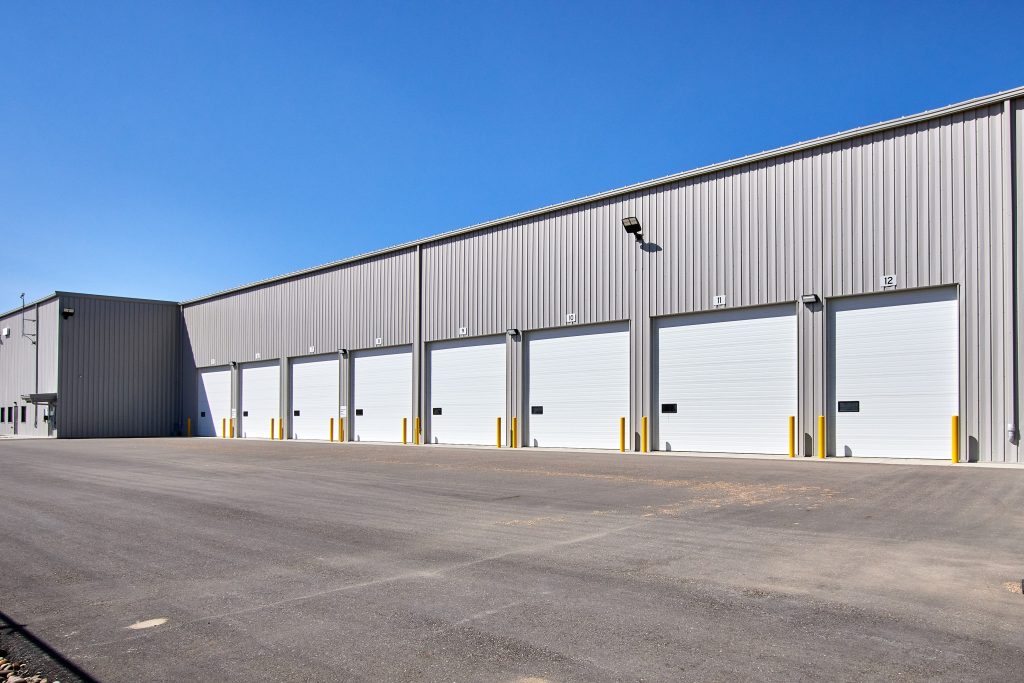
When planning a pre-engineered metal building (PEMB) project, the first question most contractors and building owners ask is, “How much will it cost?” While there is no single answer, understanding the main factors that influence pricing helps create accurate estimates and realistic expectations.
Whether you are building a warehouse, retail space, agricultural facility or manufacturing plant, this guide outlines the key components that determine the cost of a PEMB. Below, we discuss the building itself, site preparation, freight and other considerations that affect pricing in 2025.
1. Start with the Building Component Costs
The steel building components typically represent 40 to 50 percent of the total project cost. This includes the primary and secondary framing, roof and wall panels, trim and fasteners.
- Building size and design complexity: As building size increases, the average cost per square foot typically decreases for comparable designs. Customizations, such as mezzanines, cranes or lean-tos, can increase material and engineering costs.
- Steel market prices: Fluctuations in steel pricing are influenced by demand, raw material costs and tariffs.
- Roof and wall panel type: Premium standing seam panels, architectural finishes or heavier-gauge materials can increase costs.
- Insulation and energy efficiency upgrades: Adding insulated metal panels or thicker insulation improves energy performance but adds to the initial investment.
Pro Tip: Partnering with an experienced manufacturer, such as Robertson Building Systems, helps you design efficiently, reduce waste and optimize cost without sacrificing performance.
2. Do Not Overlook Site Preparation Costs
Site preparation can account for 10 to 20 percent of the total project cost, depending on the site’s condition and location.
Typical site prep expenses include:
- Land clearing and grading to create a level building pad
- Soil testing and compaction to ensure a solid foundation
- Concrete foundation and anchor bolts based on the building design and characteristics
- Utility access for water, power and drainage connections
Sites with uneven terrain, rocky soil or poor drainage will increase costs. Conversely, sites with easy access and minimal grading usually have lower prep costs.
3. Factor in Freight and Delivery
Freight costs can significantly impact your total project budget. Transporting large, heavy building components requires careful planning and can vary widely based on distance and delivery method.
Freight typically averages 10 percent of the building component costs depending on:
- Fuel prices and carrier availability
- Distance from the manufacturing facility to the job site
- Delivery schedule and sequencing, as expedited or split shipments can increase costs
Robertson’s manufacturing footprint across North America helps reduce freight costs and shorten delivery times, which can benefit builders managing multiple projects or tight schedules.
4. Additional Cost Considerations
While the building components, site prep and freight make up much of the cost, contractors should also account for:
- Erection and labor costs: Generally 30 to 40 percent of the total project, depending on complexity and crew size.
- Permitting and engineering: Local code requirements and stamped drawings can increase cost and lead time.
- Interior finishes and systems: HVAC, plumbing, electrical and interior build-outs vary by project type.
- Accessories: Doors, windows, vents, light transmitting panels and gutters can all influence the final price.
5. What’s Affecting Steel Building Prices in 2025
Steel prices have stabilized compared to previous years, but several ongoing factors continue to influence PEMB pricing:
- Labor shortages that increase erection and construction costs
- Fluctuating fuel and freight rates that impact shipping expenses
- Higher energy efficiency standards that lead many owners to upgrade insulation and panel systems
Working with an experienced manufacturer and builder early in the planning process can help you find the right balance between performance, aesthetics and cost.
Plan Your 2025 Project with Confidence
Estimating a steel building project becomes easier when you understand the key variables that drive cost. By accounting for kit pricing, site preparation, freight and construction, you can set accurate budgets and avoid costly surprises.
Ready to plan your next PEMB project?
Contact Robertson Building Systems to connect with a local sales representative and request a detailed quote tailored to your project.

